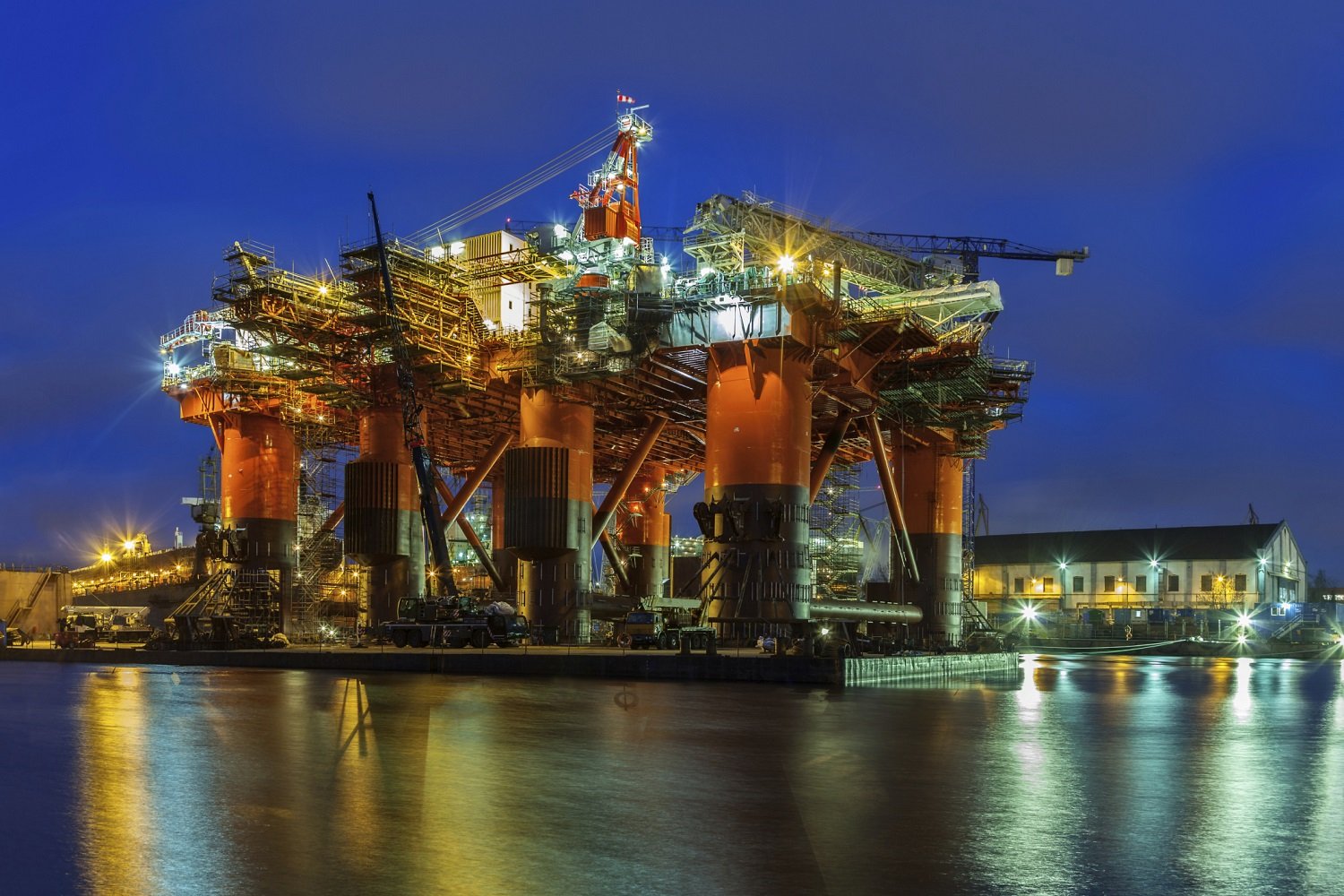Offshore oil and gas drilling expert Seadrill (SDRL +0.00%) announced first-quarter earnings this morning, and overall it was a pretty solid period. The highlights:
- Earnings per share of $0.86 well ahead of most analyst estimates.
- Cash on hand increased $70 million (with a caveat we will discuss in detail).
- Utilization rates remained high.
However, there remain several serious concerns with Seadrill that investors must continue to monitor closely. Let's take a closer look at the details. After all, that's where the devil tends to lurk.
Utilization high, cash and profits steady, but...
Seadrill's economic utilization rate, which measures the percentage of payable days its vessels were working, came in at 93% for floating drillships, and 98% for Jack-ups in the quarter, roughly inline with its 94% and 98% from the fourth quarter of 2014. This was the primary driver behind steady revenue of $1.24 billion, a slight increase from the year-ago period, if a little below the $1.26 billion average analyst prediction.
Cash and equivalents increased $72 million sequentially -- a positive considering that Seadrill's ability to generate excess cash is maybe its most important concern right now. But all current assets declined almost $400 million since Jan. 1. The biggest declines were an almost $200 million decline in restricted cash (essentially already earmarked) and $60 million in receivables, so it's not really clear that the company exited the quarter with that much of an improved capital position, or if it was simply timing. Frankly this is a question that only time -- and visible results -- will answer.
Backlog fell $2 billion, $4 billion on 15 newbuilds coming due
This is where we get to the crux of the concern. Seadrill's backlog fell from $11.6 billion in late February, to $8.9 billion through May 25, largely a product of the removal of the contracts with Rosneft from the backlog. These contracts have been a source of concern for months, and frankly could be years before they ever become a reality, for both economic and political reasons.
In the quarter, Seadrill only entered into one new contract, for $35 million in revenue on one of its Jack-up rigs. The average contract for Seadrill's floaters is 25 months, and 14 months for jack-ups. In other words, each quarter that the company moves through without extending or signing a new contract, is that much closer to having a ship in the water without a source of revenue.
Seadrill has 15 newbuilds under construction -- nine of which are scheduled for 2015 delivery -- with more than $4 billion remaining due on these vessels. Of the total, only one is lined up with a contract when it enters service, creating another risk for the company, in the form of higher debt, and higher operating expense. Seadrill currently has a $10.6 billion debt load to service, and paid $112 million to service its debt last quarter. That amount could be more than 40% higher by the end of the year, based on its newbuild schedule.
Not an attack, just a straight-forward reminder of the risks
Let's stress this point: There are a number of Seadrill customers that depend on offshore drilling to access their oil and gas reserves, but the current oil price environment puts offshore oil at the bottom of the production list. Until global demand strengthens and prices increase, demand for Seadrill and its competitors vessels will remain muted. Factor a lot of newbuilds coming online soon, and the dayrates these companies can charge are coming under serious pressure -- and it's not just me saying this. From the Seadrill earnings release:
Although shelf [offshore] production is likely to remain robust as oil companies focus on their most economic fields, the low oil price and number of newbuilds entering the market continues to pose utilization and dayrate challenges to this segment. 2015 is expected to become significantly more challenging with 60 units forecast to be entering service. Between now and 2017, approximately 130 units are scheduled for delivery, it is likely that a portion of these will be delayed or cancelled.
While Seadrill has been at the forefront of the high-spec buildout, cheap oil prices and weak demand means too many ships in the water. Think about it this way: The 60 newbuilds the industry has on order for 2015 is almost the equivalent of Seadrill's entire fleet. That's a big injection of new ships competing for less business.
Seadrill management has been steadfast in its position that they can manage through this downturn, and they're almost certainly right. But there's a big difference between definite and almost certainly.
Foolish bottom line
Oil prices are well above the (hopefully) bottom in January, but have remained stubbornly low. U.S. onshore production has remained strong even with massive lay-downs in rigs. At the same time, OPEC has held steady with its production levels (both onshore and offshore). There has been some slow growth in demand for oil, but there's still just much more ability to crank up supply than there is demand to soak it up.
Add in the wild card that is Iran, with its ability to pour another half-million daily barrels of oil into the market as soon as late summer, and the offshore picture remains very cloudy.
What do we know? Seadrill has an ultrayoung, ultramodern fleet, and has (so far) been able to keep that fleet at work. We don't know either how well it will be able to do so as its contracts expire in this environment, how hard its dayrates will be affected, and what that will look like on the bottom line.
Take what we know, and what we don't, and invest according to how much of that risk you are willing to take on.




